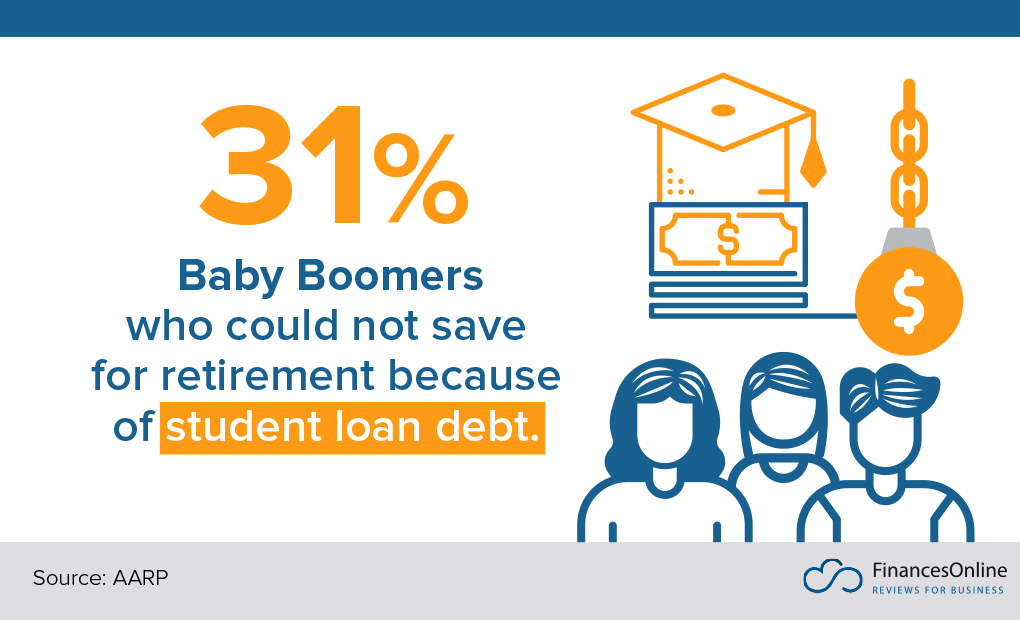Higher education is expensive, and with the current financial aid becoming more like a ball of chain dragging students through mountains of debt, we are forced to give higher learning a second look: Is college worth it? And more and more students seem to be saying that it isn’t.
In this article, we will delve into the numbers that will shed some light on why there are students who choose not to attend college at all, as well as those who did but did not graduate. We’ll likewise discuss how the COVID-19 pandemic affected student attitudes toward college. This article, why students don’t go to college statistics, might also help you decide if college is the right path for you to take, as well as what other options you have ahead.

Reasons and Statistics on Why Students Do Not Go to College
1. The Big Picture: Continuous Enrollment Decline
The reasons not to go to college statistics are an interesting blend of practical, generational, and economic factors. According to the National Student Clearing Research Center, the fall enrollment of 2020 records a 4.4% drop from 2019’s numbers. Come 2020; college enrollees continue to drop in numbers, this time by 3.3% from the previous year’s total.
Over the years, the value that the American population has placed on higher education has diminished with the high cost of college education being a major deterrent.
Source: College Tuition Compare
Since 1978, college tuition fees have increased by 1,375% (education.org, 2021). While this may not be the entire reason and is sometimes used as one of the excuses for not going to college, the cost of higher education is an underlying factor. Students would rather chase economic opportunities than a degree that would cost them thousands of dollars to attain.
Apart from economic difficulties, the COVID-19 pandemic has also adversely impacted college enrollments. A shift in student attitudes that are borne of apprehension over the pandemic has been uncovered.
- 15% of students in two-year institutions plan to take more classes while 20% plan to take fewer classes. (Inside Higher Ed, 2020)
- 7% of students in four-year institutions plan to take more classes while 8% plan to take fewer classes. (Inside Higher Ed, 2020)
- 23% of college students report changes in their employment due to the pandemic. (Inside Higher Ed, 2020)
- 27% of low-income students are likely to say that the pandemic has impacted a household member’s decision to enroll. (Inside Higher Ed, 2020)
- 2.5% – the decline in undergraduate student enrollment in 2020. (Student Clearing House, 2020)
- 1.8% – the decline in postsecondary enrollment as a whole in 2020. (Student Clearing House, 2020)
- 16.1% – the decrease in the number of freshmen enrollees. (Student Clearing House, 2020)
- A 22.7% decline in community college enrollment has also been observed. (Student Clearing House, 2020)
- Of the total decrease in undergraduate enrollment, freshmen account for 69%. (Student Clearing House, 2020)
- 51% of adults in the US believe that college education is important compared to 70% in 2013 (Gallup, 2019).
- Only about 35% of the US population, aged 25 and older have a college degree or higher in 2018 (US Census Bureau, 2019).
- 23% of respondents cite that they can’t afford college (HuffPost, 2017).
- 16% of respondents don’t go to college because they already have a good job (HuffPost, 2017)
2. There are Students Who Want to Go to College But Could Not Maintain It
Students who decide to pursue college face a new set of challenges. According to studies, the likelihood of dropping out is high, especially for first-generation college students. Part-time students are also more likely to not finish college compared to their peers who attend full time. Although financial support is still the most significant issue, academic preparedness also plays a role in the dropout rate.
- College tuition costs have increased by 1,375% since 1978. (Education Data, 2021)
- $16.5 billion – the average annual loss in tuition revenue from dropouts. (Education Data, 2021)
- 40% of college dropouts have an average of 3.0 GPA or higher. (Education Data, 2021)
- 39% of college dropouts say college education is not worth spending on. (Education Data, 2021)
- Approximately 23% of students drop out during their fourth year (Education Data, 2019).
- 30% of freshmen drop out before their second-year in college (Education Data, 2019)
- Financial pressure makes up 38% of the reasons why students drop out of college (Education Data, 2019)
- 28% of the reasons why students drop out of college is because they are not academically equipped enough (Education Data, 2019)
- 13% of the reasons why students drop out of college is because they struggle to fit in the social environment (Education Data, 2019)
- 60% of students who drop out of college do not receive financial help from their parents (Education Data, 2019)
- 40% of students who drop out of college have parents who did not attend college (College Atlas, 2018)
Reasons Why Students Drop Out of College
Source: Education Data
Designed by3. The Student Loan Issue
Student loan is the primary assistance for students who cannot financially support their college education; it does not only cover tuition fees but also other expenses (i.e., books, room, and board, etc.) This is a tremendous help, especially if you are taking one of the most expensive majors or are studying in one of the most expensive US colleges or both. But while it helps you go through college, it is also a huge responsibility.
Below are some relevant student loan statistics:
- 45 million borrowers share the national student debt. (Forbes, 2020)
- $393 – the average student loan payment. (Forbes, 2020)
- $17,000 – the median student loan debt. (Forbes, 2020)
- 10.8% – the default rate for student loan debt. (Forbes, 2020)
- In 2018, 65% of the graduating class had student loans (Institute for College Access & Success, 2019).
- Graduates of public colleges in the US during the school year 2017-2018 have an average student debt of $27,777 (Institute for College Access & Success, 2020).

4. Long-Term Effects of Student Debt
While student loan momentarily takes the financial weight off of students’ shoulders during their four or six years in college, the burden of student loan repayment is handed back to them the moment they graduate or quit, which can last until retirement. Studies show that student debt is currently affecting not only young adults but generations of Americans, especially the age group in their retirement years.
- >30 years old – the median age of 77.2% of aid recipients.
- 37.8% of whom are full-time students. (Education Data, 2020)
- Students under 25 years old make up 17.7% of students with loan balances. (Education Data, 2020)
- 60% of college recipients have an average of $16,940 in federal loans. (Education Data, 2020)
- 42% of associate recipients have an average of $21,890 in federal loans. (Education Data, 2020)
- 63% of bachelor’s graduates have an average of $31,790 in federal loans. (Education Data, 2020)
- $1.6 trillion – the total value of student loan debts in the US in 2020. (Forbes, 2020)
- Standard repayment period of student loans is between 10 to 30 years (Federal Student Aid).
- Borrowers from the age group of 35 to 49 have the highest total amount of student debt at $548.4 billion (Credit.com, 2019)
- A total of $67.8 billion student loan is still being paid by respondents who are 62 years old and older (Credit.com, 2019).
- A study on the economic wellbeing of American (US) households from 2016 to May of 2017 shows that 93.7% of debt holders have student loans (Federal Reserve, 2017).
- A study shows that student debt prevents 31% of Baby Boomers (ages 54-72) from saving for their retirement (AARP, 2019).
- 48% of households within the Baby Boomer demographic and 44% of Millenial and Gen X households consider student loans as a major problem (AARP, 2019).

5. A College Degree Is Not a Golden Ticket to Your Dream
A Forbes article claims that the unemployment rate of college graduates is at its highest in 2019. Underemployment statistics do not look better either. While college majors play a factor in the employment rate, statistics still show that there are 20 college majors recorded to have an underemployment rate of above 50%.
- 1 in 4 students says a college education is affordable. (gritdaily.com, 2020)
- $21,370 – the average tuition in a public university. (gritdaily.com, 2020)
- $40,000/year – the difference between the earnings of high-earning and low-earning majors. (gritdaily.com, 2020)
- The top 50% of high school graduates and the bottom 50% of college degree holders have the same earnings. (gritdaily.com, 2020)
- Less than 50% of college graduates are successful in finding purposeful work (Gallup, 2019)
- As of February 2019, the unemployment rate of recent college graduates in the US by major goes as high as 7.9% (New York Fed, 2019).
- Recent college graduates have an underemployment rate of as high as 73% based on their major (New York Fed, 2019).
- By the end of 2019, 33.8% of college graduates in the US are underemployed (New York Fed, 2019).
Source: New York Fed
The College Alternative
College is seen as the beacon for students and families aiming for a brighter future. But with the critical state of student debt, preference for vocational or career and technical education courses is becoming more evident in studies on various trade school college statistics. These schools provide technical and practical training for students looking for career options that don’t require a college degree.
Technology statistics also show promising industry growth, which opens more opportunities to non-college degree professions, such as those that fall under web design trends and cybersecurity.
Keep in mind, however, that trade school is not a college replacement but a practical alternative, especially for students who don’t see a four-year college degree as a worthy investment. Although a bachelor’s degree and higher education remain as ideal choices, with all things considered, it is up to the student to determine if college is indeed worth it.
Key Insights
- Declining Enrollment Rates: College enrollment has been steadily declining due to the high cost of education, with a significant drop noted during the COVID-19 pandemic. Economic challenges and shifting attitudes towards the value of a college degree contribute to this trend.
- Financial Burden of College: The skyrocketing cost of college tuition, which has increased by 1,375% since 1978, is a major deterrent for many students. The burden of student loans further exacerbates the issue, impacting long-term financial stability for graduates.
- High Dropout Rates: A significant number of students who start college do not complete their degrees, often due to financial pressures, lack of academic preparedness, and poor social fit. This contributes to a substantial loss in tuition revenue and personal financial investment.
- Student Loan Crisis: The student loan debt in the U.S. has reached $1.6 trillion, affecting millions of borrowers across generations. This debt significantly impacts borrowers’ financial health and their ability to save for retirement.
- Employment Challenges for Graduates: A college degree no longer guarantees a stable job. High unemployment and underemployment rates among recent graduates, coupled with the high cost of education, question the return on investment of a college degree.
- Alternative Education Paths: Vocational and technical education are becoming more attractive as practical alternatives to traditional four-year college degrees. These paths offer specialized training and skills that align with current job market demands without the burden of excessive student debt.
FAQ
- Why is college enrollment declining? College enrollment is declining due to the high cost of education, economic challenges, and shifting attitudes towards the value of a college degree. The COVID-19 pandemic has also contributed to this decline by causing financial uncertainty and changing student priorities.
- What are the main financial challenges associated with attending college? The main financial challenges include the high cost of tuition, fees, books, and living expenses. Many students rely on student loans to cover these costs, leading to significant debt upon graduation.
- How has the COVID-19 pandemic affected college enrollment? The COVID-19 pandemic has led to a decline in college enrollment due to financial uncertainties, changes in employment status, and apprehension about the value of online learning. Many students opted to take fewer classes or postpone their education.
- What are the long-term effects of student loan debt? Long-term effects of student loan debt include delayed financial milestones such as buying a home, saving for retirement, and starting a family. It can also lead to higher levels of stress and financial insecurity.
- Why do many students drop out of college? Many students drop out of college due to financial pressures, lack of academic preparedness, poor social fit, and insufficient support from their institutions. Part-time students and first-generation college students are particularly at risk.
- Is a college degree still valuable in today’s job market? While a college degree can still be valuable, it no longer guarantees stable employment or high earnings. Many graduates face underemployment or unemployment, and the high cost of education raises questions about the return on investment.
- What are some alternatives to a traditional four-year college degree? Alternatives include vocational and technical education, which provide specialized training for specific careers. These programs often cost less than a traditional college degree and align with current job market demands.
- How does student debt affect different generations? Student debt affects not only young adults but also older generations, including those nearing retirement. Many borrowers continue to repay student loans well into their 30s, 40s, and beyond, impacting their overall financial health.
- What factors contribute to the high cost of college education? Factors include rising tuition fees, administrative costs, reduced state funding for public colleges, and the increasing demand for amenities and services provided by colleges and universities.
- How can students decide if college is the right path for them? Students should consider their career goals, financial situation, and the potential return on investment of a college degree. They should also explore alternative education paths, such as vocational training or online courses, to determine the best fit for their needs.
References:
- AARP (2019). Student Debt Across Three Generations. Retrieved from AARP
- College Atlas (2018). U.S. College Dropout Rate and Dropout Statistics. Retrieved from College Atlas
- Credit.com (2019). U.S. Average Student Loan Debt Statistics in 2019. Retrieved from Credit.com
- Education Data (2021). College Dropout Rates. Retrieved from Education Data
- Education Data (2019). College Dropout Rates. Retrieved from Education Data
- Education Data (2020). Student Loan Debt Statistics. Retrieved from Education Data
- Federal Reserve System (2017). Report on the Economic Well-Being of U.S. Households in 2016 – May 2017. Retrieved from Federal Reserve System
- Federal Student Aid (n.d.). The Standard Repayment Plan is the basic repayment plan for loans from the William D. Ford Federal Direct Loan (Direct Loan) Program and Federal Family Education Loan (FFEL) Program.. Retrieved from Federal Student Aid
- Friedman, Z. (2020). Student Loan Debt Statistics In 2020: A Record $1.6 Trillion. Retrieved from Forbes
- Gallup (2019). Forging Pathways to Purposeful Work: The Role of Higher Education. Retrieved from Gallup
- Institute for College Access & Success (2019). Project on Student Debt. Retrieved from Institute for College Access & Success
- Institute for College Access & Success (2019). Student Debt of Graduating Seniors. Retrieved from Institute for College Access & Success
- Klein, R. (2017). This Is Why 12 Percent Of High School Graduates Don’t Go To College. Retrieved from Huffpost
- Marken, S. (2019). Half in U.S. Now Consider College Education Very Important. Retrieved from Gallup
- McCoy, J. (2020). Is College Worth the Debt in 2020? What Studies Show & How You Can Earn a High-Paying Job Without a Degree. Retrieved from gritdaily.com
- New York Fed (2019). The Labor Market for Recent College Graduates. Retrieved from New York Fed
- Polikoff, M. Silver, D., & Korn, S. (2020). What’s the Likely Impact of COVID-19 on Higher Ed?. Retrieved from Inside Higher Ed
- Sedmak, T. (2020). Fall 2020 Undergraduate Enrollment Down 4% Compared to Same Time Last Year. Retrieved from Student Clearing House
- US Census Bureau (2019). CPS Historical Time Series Tables. Retrieved from US Census Bureau























Leave a comment!